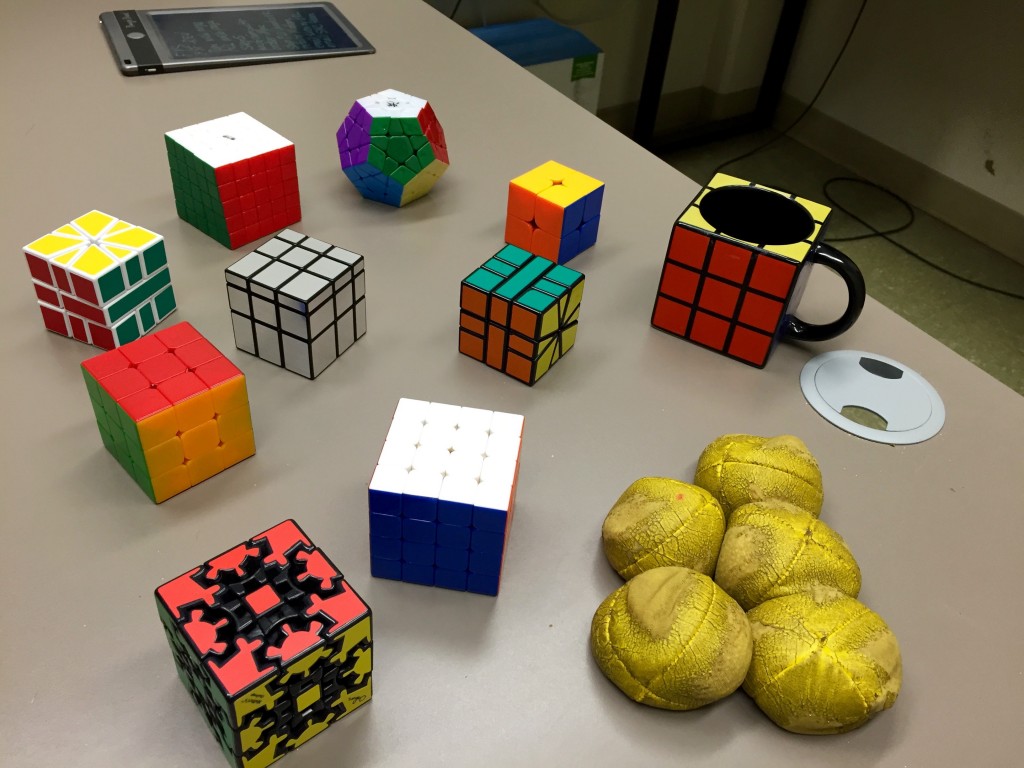As a kid, I enjoyed solving the “15 puzzle”, a sliding puzzle consisting of a 4×4 grid of 15 squares. However, I was amazed by a kind of 3D analogue of the 15 puzzle: Ernö Rubik’s 1974 masterpiece, which is both a seemingly impossible mechanism (how does it not fall apart?) and a silent challenge (one knows immediately what needs to be done). It took me about a month to solve my first Rubik’s cube. I got a notebook, created a move notation, and filled it with formulas like FRUR’U’F’ and LU’R’UL’U’RU2. I was never a speed cuber, but I learned to easily and efficiently solve the cube from generic initial conditions. Years passed and my cube skills lapsed, until visiting professor Nelia Mann showed me her collection of 3D twisting puzzles. Better technology had enabled a new generation of Rubik’s cubes that turned easily and were stickerless. I determined to devote part of my University of Hawai’i sabbatical to reviving my puzzle skills.
Using resources online, I first mastered the 4-layer Revenge Cube followed by the 5-layer Professor Cube (and I had already mastered the 2-layer cube, which uses a subset of the 3-layer algorithms). I enjoyed the Mirror Cube, which is a cool variation, where shape replaces color. A related puzzle, which I found fun to manipulate but easy to solve, is the Gear Cube. Many years ago, math professor Pam Pierce lent me her Square-1 puzzle, which has a daring diagonal move, but I never had time to solve it. I’m pleased to report that I now can efficiently solve the Square-1, whose algorithms look like /(3,-3)/(0,3)/(-3,0)/(3,0)/(-3,0)/. Finally, I learned to solve the dodecahedral Megaminx, which has a different permutation group, but is still closely related to the cubes. The Megaminx is my favorite puzzle after the original Rubik’s cube.
I spend so much time working at a computer, it’s nice to interact with these wonderful mechanisms. Many more such puzzles await my next sabbatical. In the photo, in addition to the twisty puzzles, you see 5 juggling balls, which I learned to juggle during my previous sabbatical at the University of Portland. The Rubik’s cube mug is fully functional (as a mug), and I use it all the time — thanks Johanna!


3 responses to “Rubik’s Cube Puzzles”
Nice. Yet, without the 1x1x1 cube, your collection seems incomplete.
I’m still trying to wrap my mind around the 1-layer cube, but I hope to eventually solve it.
Noice!